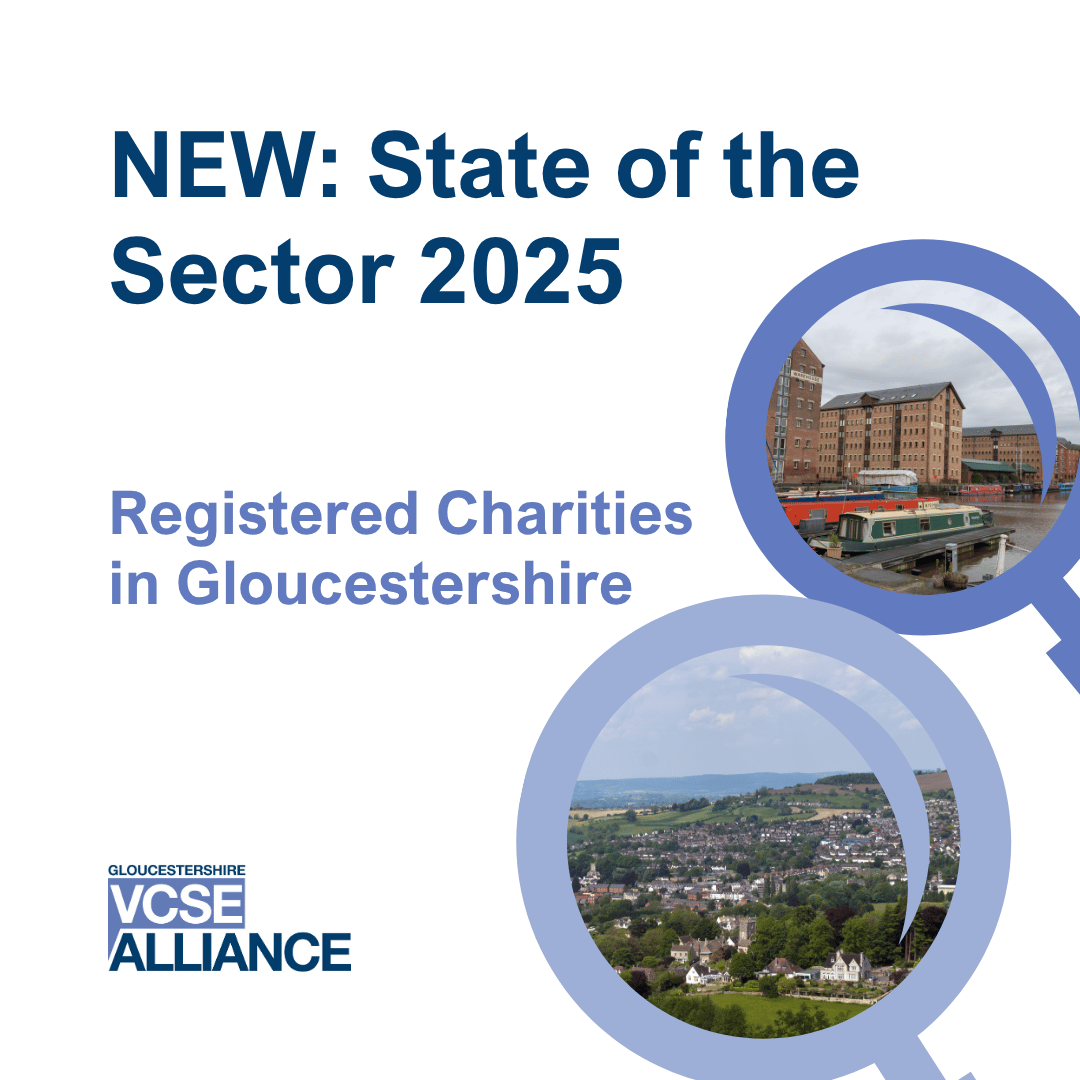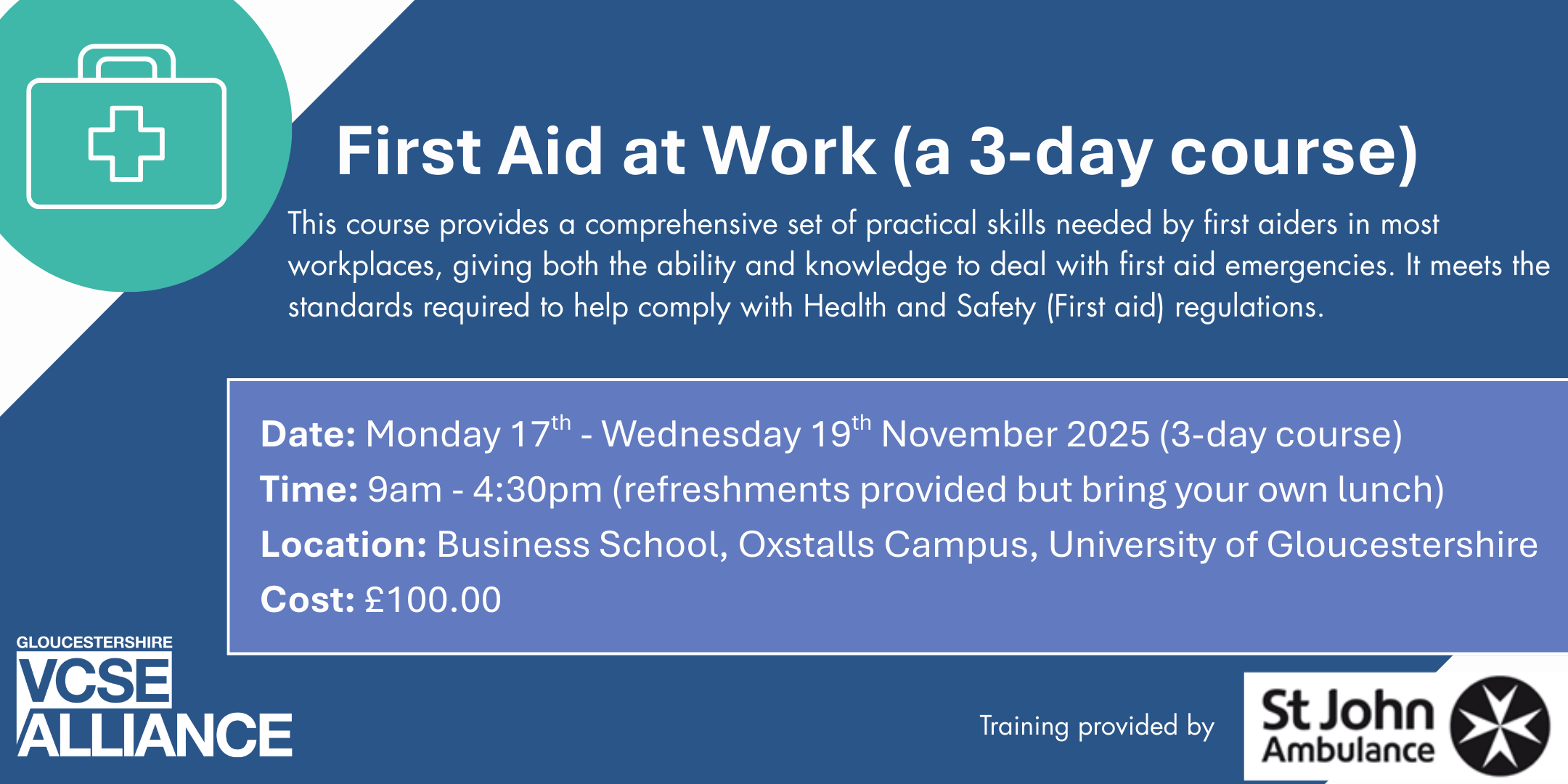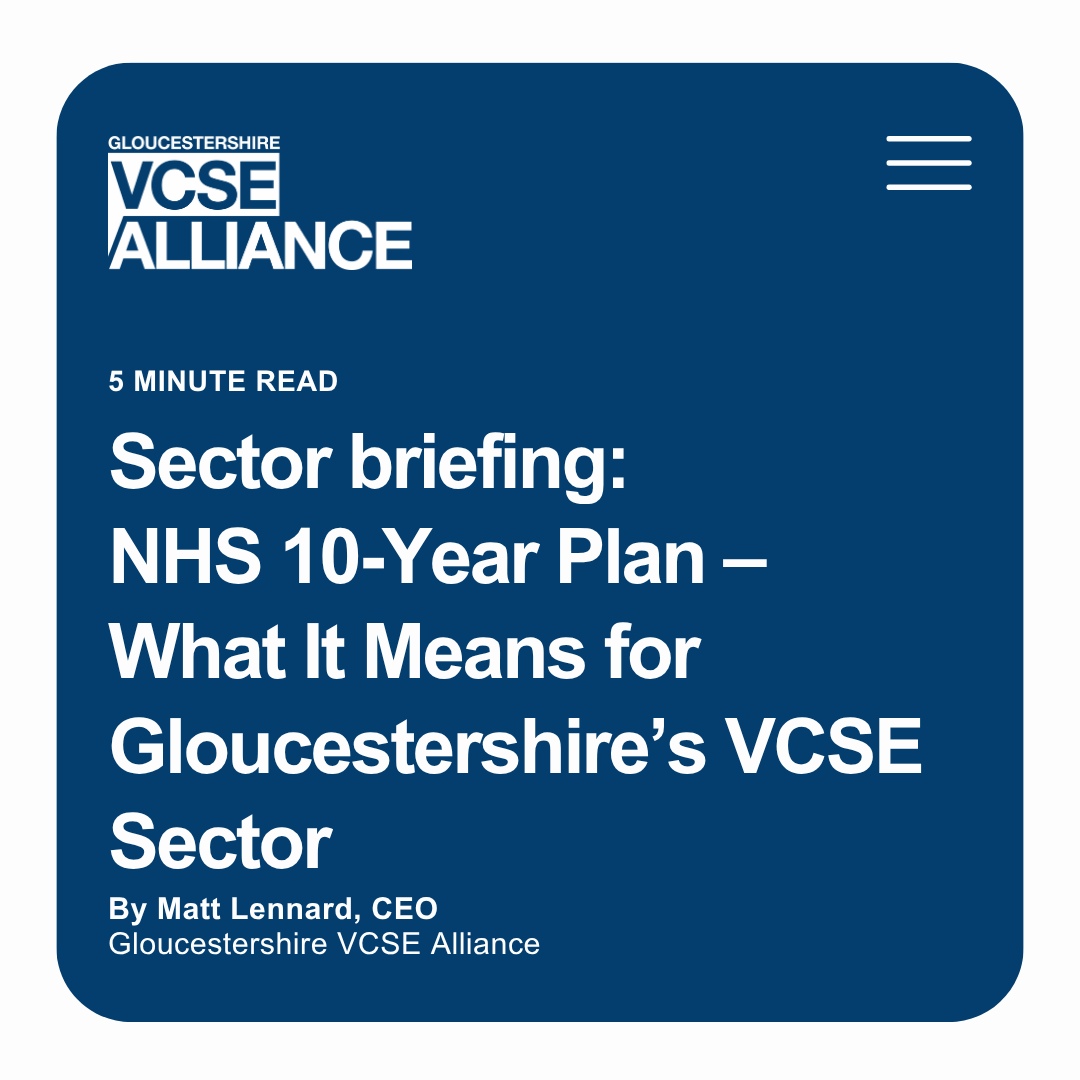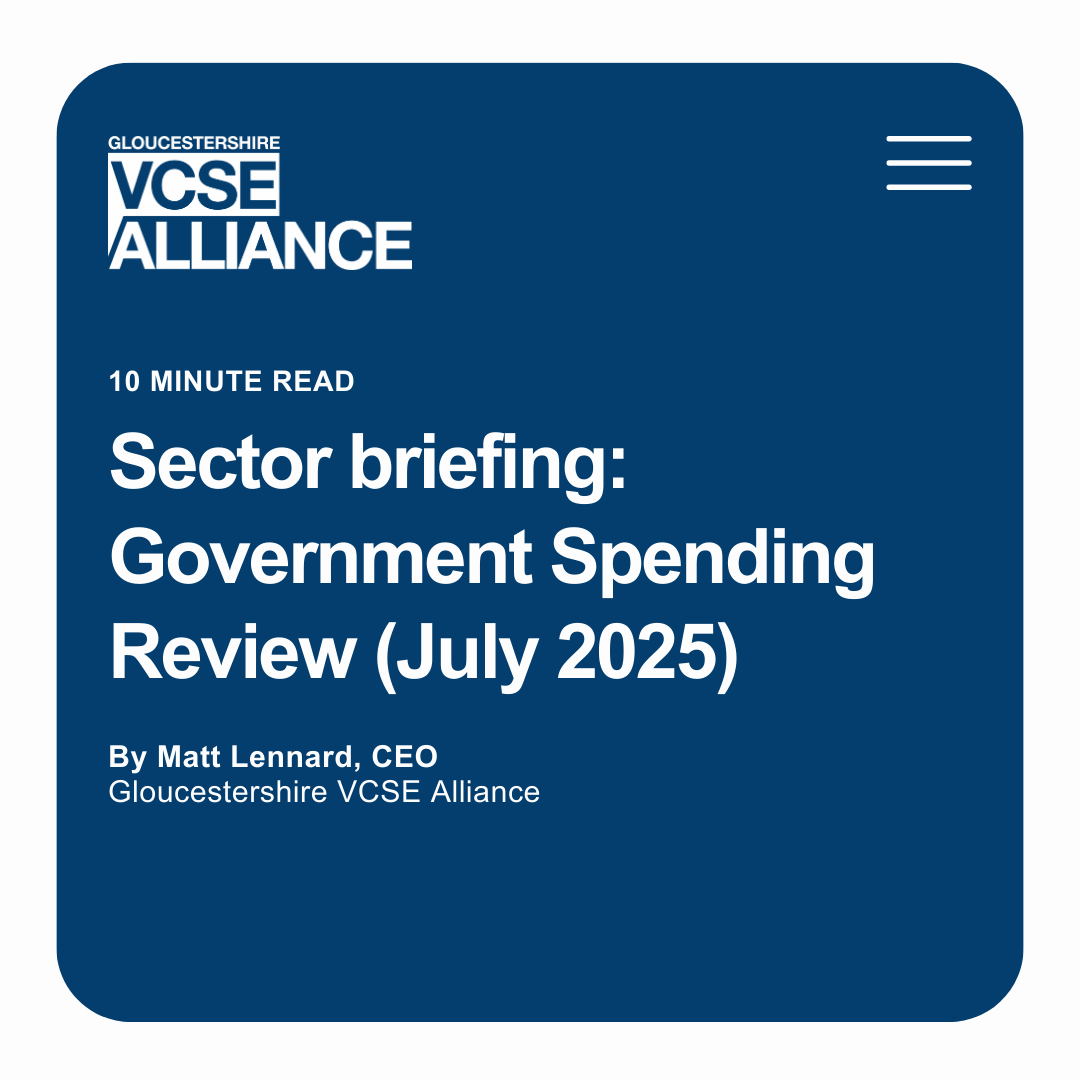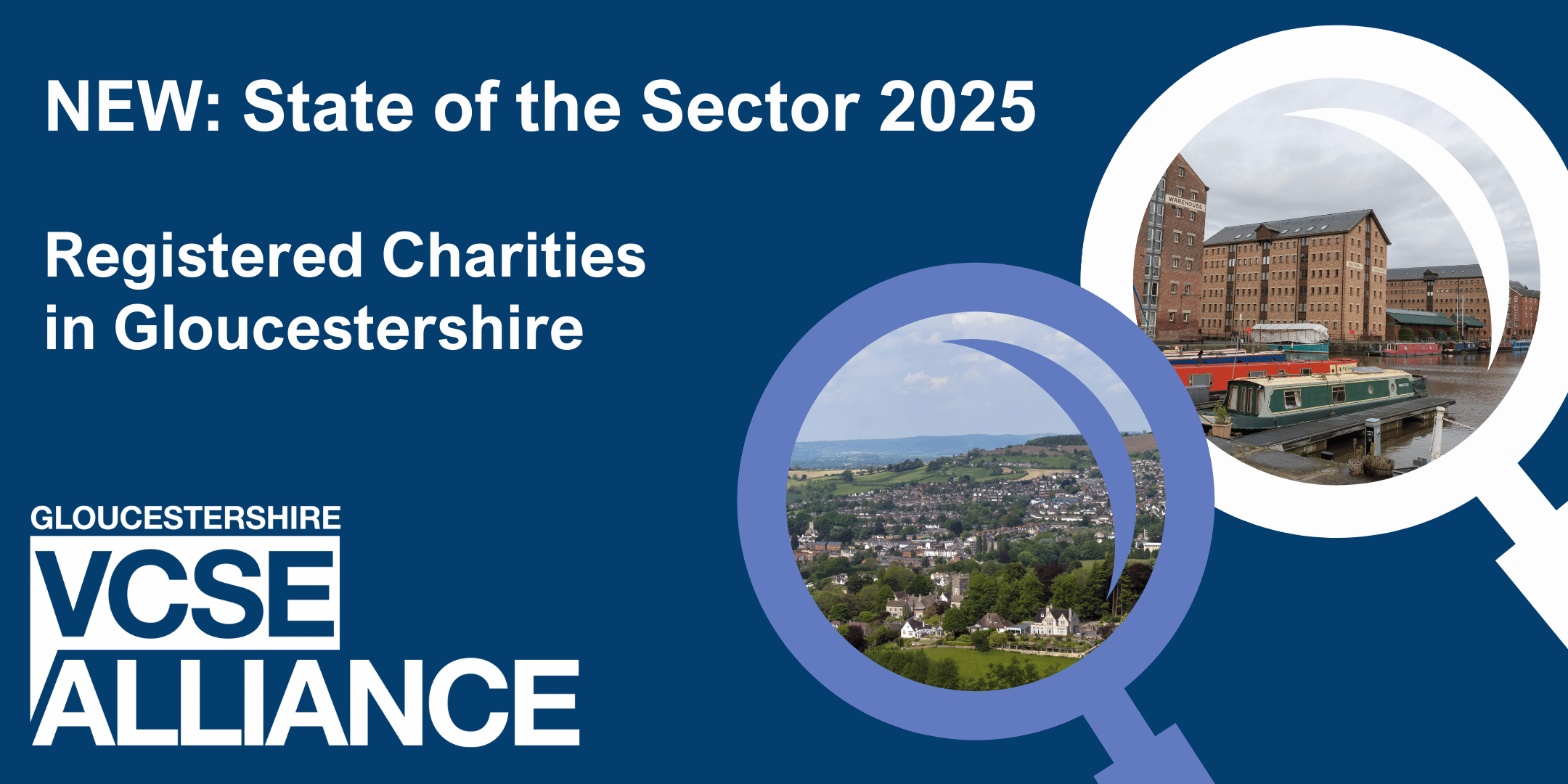We’re pleased to launch our State of the Sector Report 2025, a comprehensive overview of the health of Gloucestershire’s charities. With over 4,500 not-for-profit organisations operating in the county, the VCSE sector continues to play an essential role in supporting their communities, tackling inequalities, and delivering frontline services where they are needed most.
Gloucestershire is a diverse county and the VCSE sector is at the forefront of positive change within local communities.
Despite facing unprecedented pressures on capacity and funding, local VCSE sector organisations continue to provide high-quality, vital services within our communities.
Using data from our members, the Charity Commission and ONS, our 2023 State of the Sector Report analyses the challenges faced by the sector and highlights some key changes affecting VCSE organisations in Gloucestershire.
Download our Report: Gloucestershire VCSE Alliance State of Sector Report 2023.
Explore our data & insight pages
To view our State of the Sector reports, data dashboards and to find a range of insights about the VCSE sector in Gloucestershire, please visit our data & insights section.
Join us
Our members work together to make lasting, positive change within local communities. Membership is free for VCSE and statutory organisations delivering services in Gloucestershire. By joining us, local organisations become part of a wider community and are able to access a range of enhanced benefits above and beyond our usual fully-funded support. You can find out more on our membership page.
Work with us
We're always looking for new ways to collaborate and work in partnership with colleagues from the VCSE and statutory sectors, as well as local business. If you're interested in working with us and would like to explore this in more detail, please
Our Charity Data & Insights Report for 2024 presents key data and insight into the VCSE Sector in Gloucestershire.
Using data from our members, the Charity Commission and the Office for National Statistics (ONS), our report is accompanied by an interactive data dashboard which you can find further down this page. If you require a copy of the graphs in this report in a larger size, please
Introduction from our CEO
Gloucestershire is a diverse county and the VCSE sector is at the forefront of positive change within our sector. Despite facing unprecedented pressures on capacity and funding, local VCSE organisations continue to provide high-quality, vital services within our communities.
The data used to create this report is for the 2022/23 financial year and aims to provide an overview of thestate of play within the VCSE sector in Gloucestershire in March 2023, ahead of our fuller report for the 2023/24 financial year which will be published later this year.
To complement this report, we have published an interactive data dashboard for the same period, so that you can delve deeper into different elements of our sector and generate data specific to your organisation’s individual needs.
To help you compare with national data, we have used National Council for Voluntary Organisations (NCVO) categories throughout. You may also find our Community Interest Companies (CIC) Report, published in November 2024, an additional useful reference point.
We've used some of the charts in this report and can provide a more accessible version on request. You can request a more accessible version by
Key headlines
Number of registered charities in Gloucestershire
Key insights:
- In 2022/23 there were 2,026 registered charities in Gloucestershire.
- 49 of these charities were newly registered during this period.
Please note: Data on newly registered charities is limited as they are not required to report to the Charity Commission within their first 12 months of registration. Our next State of the Sector Report will drill down into the 2022/23 registrations further, examining funding streams and operational subsectors.
Active charitable organisations by district
Key insights:
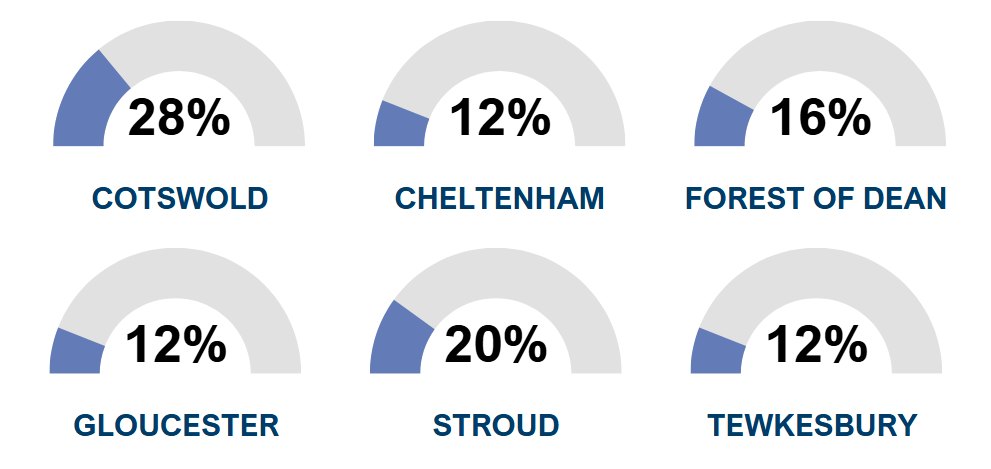
Number of charities in Gloucestershire by NCVO sub sector
Key insights:
- Grant-making foundations were still the largest sub sector in 2022/23, accounting for 24% of all charities in Gloucestershire.
- Culture and recreation continued to have a very strong presence making up 21% of all organisations*.
- Fundraising organisations sit within two categories (umbrella bodies and Parent and Teacher Associations) and combined, they account for 12% of all registered charities.
* Culture and recreation contains subcategories such as sports clubs, arts and heritage organisations, as well as recreation and social clubs. It is widely recognised that these types of organisations contribute significantly to community cohesion and personal wellbeing.
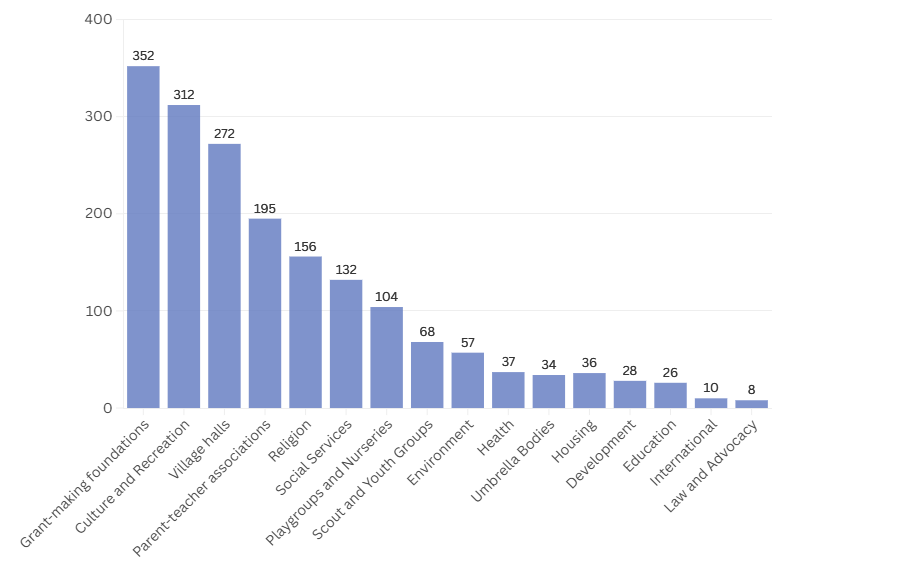
Total income to registered charities
Key insights:
- There has been a 15.7% increase in charitable income in the 2023/24 financial year. While this is an encouraging sign, it comes after two years of income stagnation and a significant increase in costs to charities.
- It is also important to consider that many service delivery organisations have reported an increase in demand for their services. They have also reported an increase in the complexity of support required, which is putting additional strain on their organisation’s finances.
- Income growth was recorded across all districts during the same period.
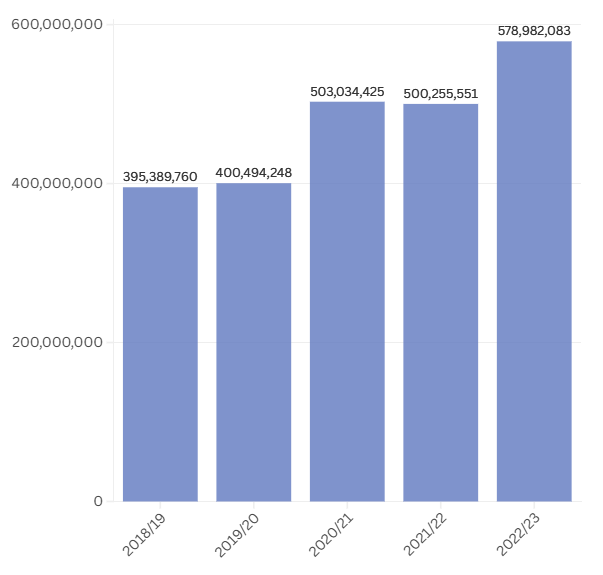
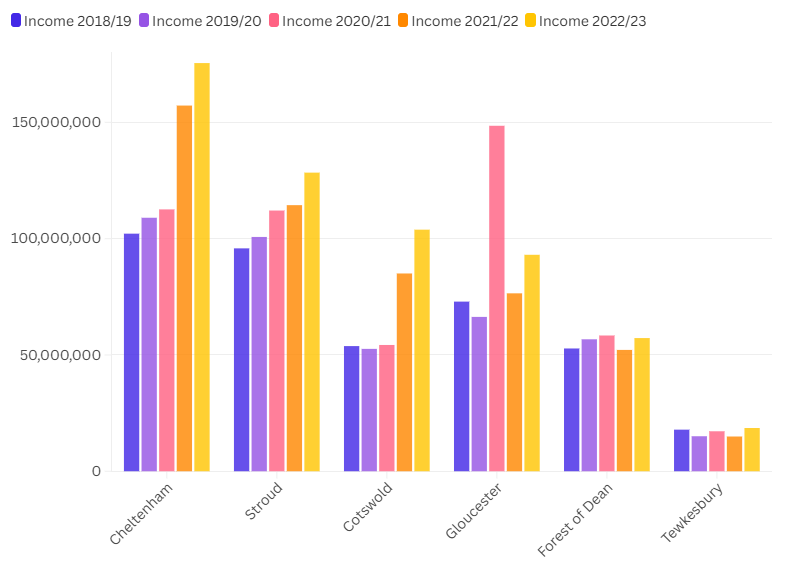
Income by NCVO size
Key insights:
- Large and major organisations continue to dominate financially, accounting for over 70% of the total income.
- Medium organisations account for 20% of the total income.
- Small and micro-organisations collectively account for just 9% of the total income, with small organisations at 6% and micro at 3%.
- Since 2022/23, small and micro-organisations have seen their share of income grow by only 1.5%, while medium organisations have experienced a 2% increase. This modest growth underscores the ongoing disparity between the number of organisations in each NCVO size category and their share of the total income.
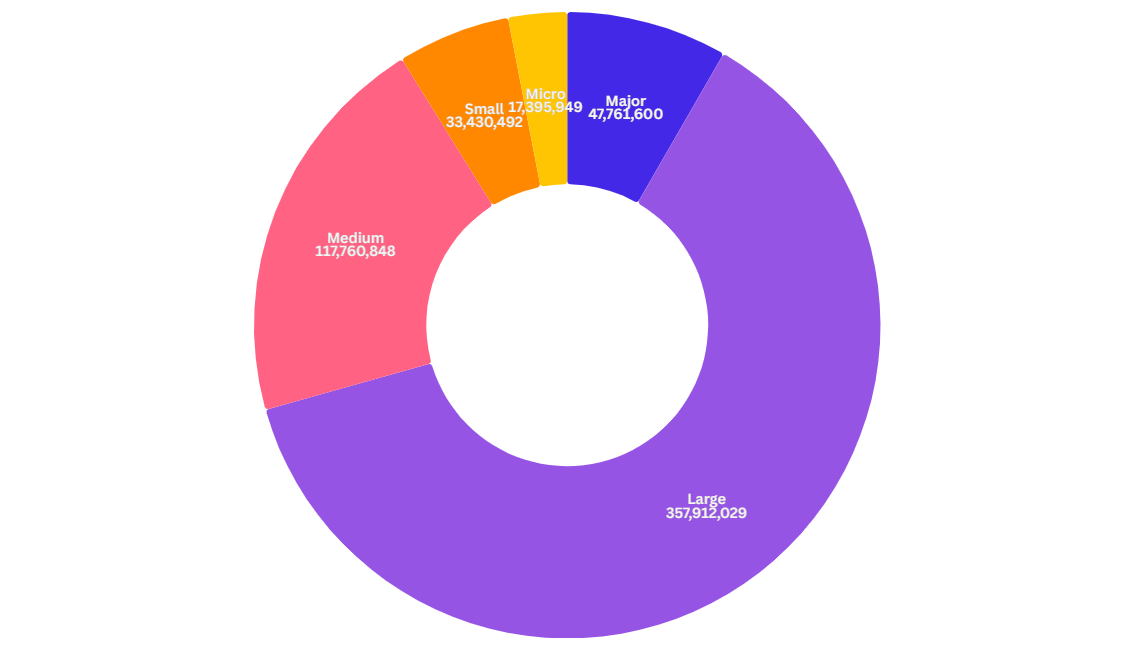
Please note: NCVO/ ICNPO Categories - Throughout this report NCVO’s modified version of the International Classification of Non-profit Organisations (ICNPO) has been used to describe the activities of voluntary organisations and classify them financially. An explanation of the ICNPO and NCVO’s income bands is available here: https://www.ncvo.org.uk/news-and-insights/news-index/uk-civil-society-almanac-2023/about/definitions/
NCVO size
Key insights:
- The distribution of NCVO size categories has remained static over the past year.
- This indicates relative stability of funding within the sector with charities maintaining a similar level of funding.
- Small and micro charities continued to make up the majority of the sector within Gloucestershire accounting for 83% of all charities.
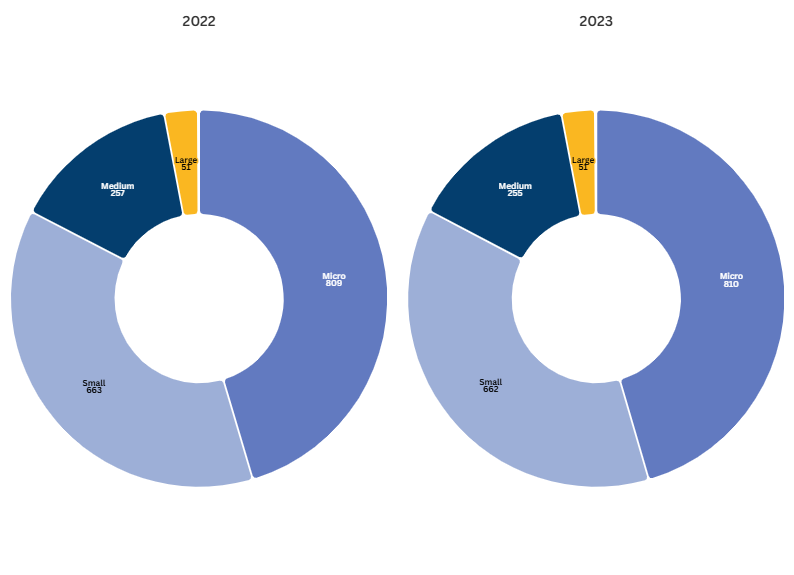
Dormant and dissolved charities
- There were 192 dormant charities within Gloucestershire in 2022/23.
- 31% were grant-making foundations.
- 14 charities closed and there was one merger.
Future outlook
The 2023/24 period continued to present a variety of challenges for the VCSE sector, both locally and nationally. Local groups and organisations continue to manage the impact of the cost-of-living crisis and report increased demand for their services. Volunteer and trustee recruitmentremains a recurring issue, as does the need to increase and diversify funding streams.
With this in mind, it is vitally important that we reflect on the successes and strengths of our sector. Despite facing significant financial challenges and a range of other pressures, our sector has continued to grow. This resilience underscores its agility and adaptability—demonstratingthe ability to evolve and expand, even in the face of uncertainty.
We feel that it is important that we draw attention to the fact that small and micro-organisations continued to make up only 9% of the total income within our sector during 2022/23. This is a concern asthis cohort of organisationsrepresent83% of the charities providing services within Gloucestershire.
We have been monitoring this over the last few years and have continued to engage and work withsmaller groups and organisations in our county,so that they canaccess timely funding information and support, a range of sector-specific learning and development opportunities as well as support to recruit and retain volunteers.
There is no doubt that running costs, particularly the increase in National Insurance,alongside the increasing cost of living and energy prices will continue to impact local charities greatly over the coming years.Therefore, whilstthe increase in income for organisations across the county is a positive step forward, the impact will likely be offset by rising running costs and is not significant enough to equate to more capacity or activity within our sector.
This, combined with an increase in demand for VCSE services make it clear that the sector, as a whole, needs to think differently about how it delivers its services, how it develops its income streams and how it works in partnership to keep money on the frontline. Innovation and creativity are going to be key for organisations to meet the upcoming challenges head on.
That said, the opportunities for our sector are huge, and the next two years will be challenging, but exciting too. With local government reform on the horizon and the NHSpush towards community-based care, the VCSE sector will remain a key strategic partner in our county. Additionally, with the Integrated Care Board making a strategic shift towards prevention, the VCSE sector will be a key delivery partner and strategic influencer.
With our work towards VCSE accountable representation and the relationship between the VCSE and statutory sector stronger than ever, our sector is in pole position to influence Gloucestershire’s big strategic challenges.
In our 'State of the Sector Report (2025)' we’ll do a deep dive into the financial and operational landscape of Gloucestershire’s VCSE sector taking a closer look at the environment shaping our sector’s future. We’ll be exploring the challenges, opportunities, and the incredible work happening throughout our sector. We can’t wait to share it with you.
Matt Lennard, CEO
Charities in Gloucestershire data dashboard
Our interactive data dashboard enables you to search for local charities and find out more about their finances, governance and resources. You can find out more on our Charity data dashboard page.
Explore our data & insight pages
To view our State of the Sector reports, data dashboards and to find a range of insights about the VCSE sector in Gloucestershire, please visit our data & insights section.
Join us
Our members work together to make lasting, positive change within local communities. Membership is free for VCSE and statutory organisations delivering services in Gloucestershire. By joining us, local organisations become part of a wider community and are able to access a range of enhanced benefits above and beyond our usual fully-funded support. You can find out more on our membership page.
Work with us
We're always looking for new ways to collaborate and work in partnership with colleagues from the VCSE and statutory sectors, as well as local business. If you're interested in working with us and would like to explore this in more detail, please
The most recent Census (2021) estimates that there are 5 million unpaid carers in England and Wales. Together with ONS Census data for Scotland and Northern Ireland, the data suggests that there ate 5.8 million carers across the UK (Carers UK).
Our Sector Insights provides a breakdown of the statistics for carers in Gloucestershire. - RP, speak to Emily.
Number of unpaid carers
- In 2021, there were 51,860 people providing unpaid care in Gloucestershire.
- This is equivalent to 8.5% of the population.
- The Forest of Dean had the highest proportion of unpaid carers (9.7% of the population). Cheltenham had the lowest proportion of unpaid carers (7.4%).
Economic contribution
- The estimated economic value of the contribution made by unpaid carers in Gloucestershire is over £1.5 billion per year.
- Number of carers, by district (nominal value -£M):
- Cheltenham 8,415 241
- Cotswold 6,990 199
- Forest of Dean 8,050 253
- Gloucester 10,540 335
- Stroud 10,270 281
- Tewkesbury 7,595 224
- Total 51,860 £1,533M
Source: Petrillo and Bennett, Valuing Carers 2021
Key facts
- Women are more likely to become carers and to provide more hours of unpaid care than men. Nationally, 59% of unpaid carers are women. (census 2021). Need links for all of these, like above - ask Emily.
- One in seven people in the workplace in the UK are juggling work and care. (Carers UK, Juggling Work and Care, 2019).
- 1 in 3 NHS staff provide unpaid care. (NHS Staff Survey, 2022).
- 60% of carers report a long-term health condition or disability compared with 50% of non-carers. (Carers UK analysis of GP Patient Survey 2021).
- 44% of working age adults who are caring for 35 hours or more per week are in poverty. (Joseph Rowntree Foundation, UK Poverty 2022).
- 75% of working carers worry about continuing to juggle work and care (Carers UK, State of Caring 2022).
The impact of caring on health
- Carers UK (The State of Caring 2023) has found that:
- 82% of carers anticipated that the impact of caring on their physical and mental health would be a challenge in the year ahead.
- 79% of carers said that they feel stressed or anxious.
- 49% of carers said that they feel depressed.
- 50% of carers said that they feel lonely.
- In addition, 65% of carers feel the increase in the cost of living is having a negative impact on their physical and/or mental health.
Useful reports and websites
- Carers UK https://www.carersuk.org/
- The Health Foundation https://www.health.org.uk/
- The Children’s Society – Young Carers Initiative https://www.childrenssociety.org.uk/
- Unpaid Care – Parliamentary Office of Science and Technology https://post.parliament.uk/research-briefings/post-pn-0582/
- Inform Glos https://www.gloucestershire.gov.uk/inform/adults-and-older-people/carers/
HM to add usual 'blurb'.

